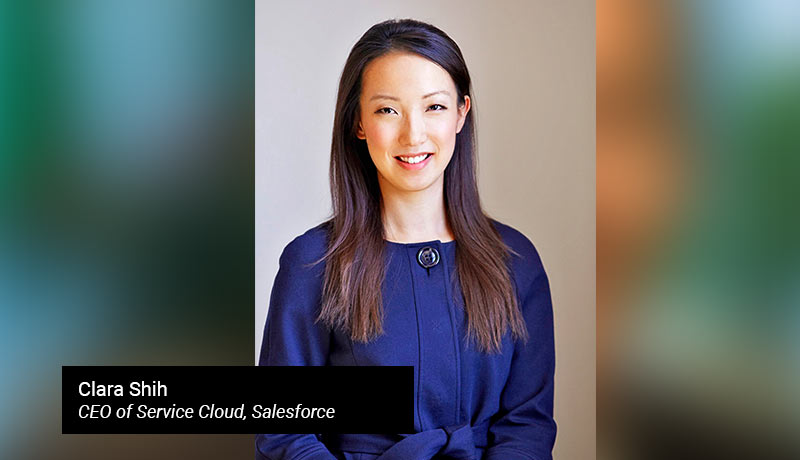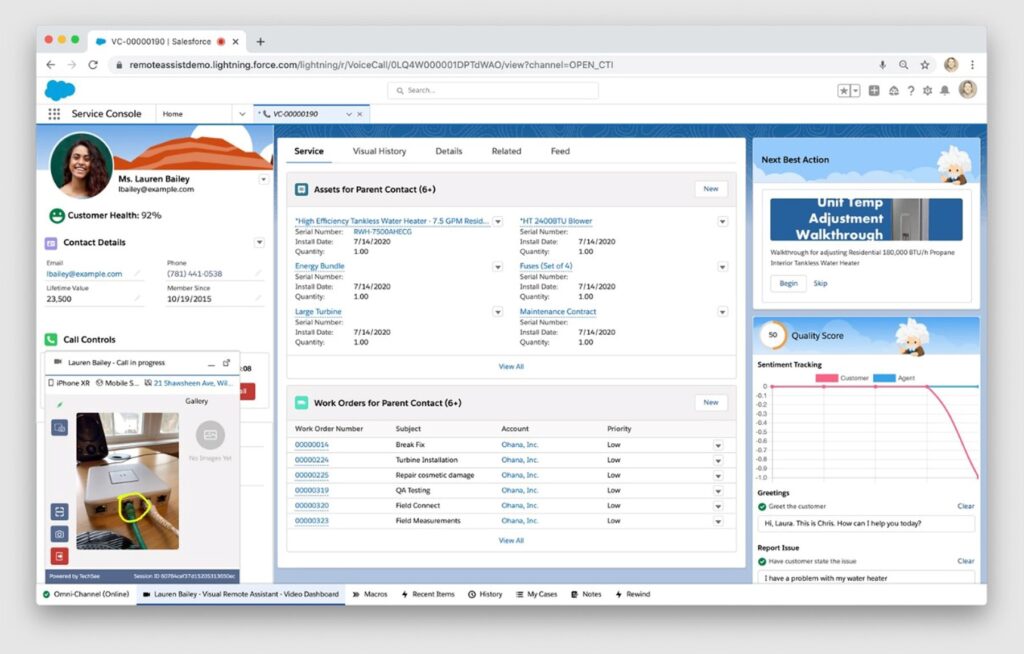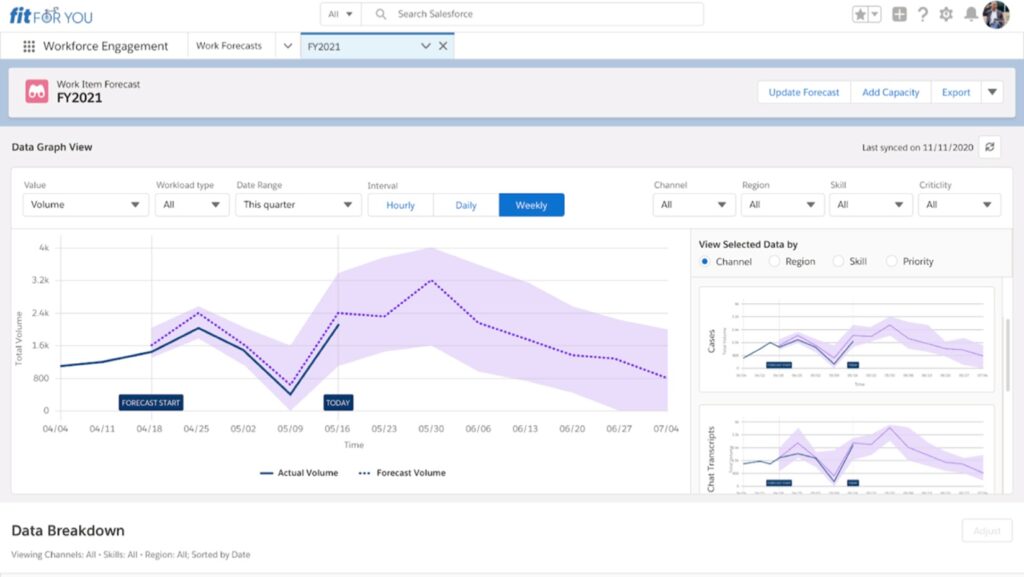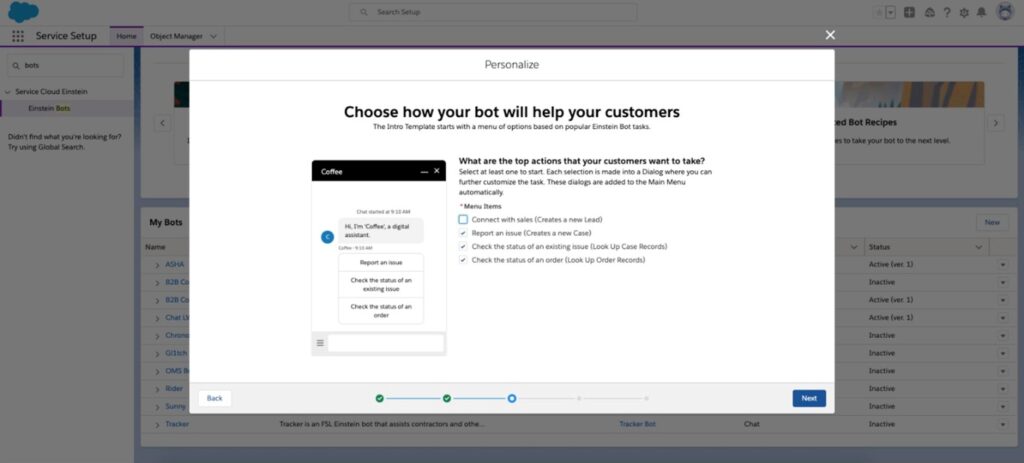11 April 2025, Fri |
3:36 AM

Salesforce introduced the next generation of Service Cloud — technologyto support changing customer service expectations and provide connected, personalized service from anywhere on one digital engagement platform.
Over the last year, service agents moved quickly to work from their kitchens and living rooms, but relied on legacy technology—disparate, on-premise solutions and spreadsheets—that wasn’t designed to manage globally distributed workforces. At the same time, agents were reeling from a monumental surge in the volume of customer requests across all digital channels and new, in-demand experiences like appointment setting and curbside pickup.

Today, parts of the world are beginning to re-open—53% of U.S. consumers plan to fly on a plane by the end of this year, and 97% plan to shop inside a store. Reopenings will also introduce a slew of new questions around updated policies, protocols, and safety measures. This adds a new level of challenge for agents, who will be on the frontlines, and who are already contending with increased workloads and more demanding customers. In fact, 82% of consumers expect to continue contacting customer service at pandemic-level rates yet just 36% of service professionals feel fully prepared to handle a surge in service and support cases.
“We are on the cusp of a great reopening of society, and companies know they need to move quickly to seize the moment,” said Clara Shih, CEO of Service Cloud, Salesforce. “While customers and companies alike are eager to return to in-person experiences, digital behaviors we learned and grew accustomed to during the pandemic are here to stay.”
According to a Forrester report authored by Kate Leggett, VP Principal Analyst, Forrester, “Customer service leaders must stay abreast of three megatrends in 2021 as they weather the storm: AI-fueled digital experiences underpin great customer service, modern agent desktops empower agents to best serve customers, and customer service technology enables resilience and sustainability.1
For companies to thrive, they need to make every customer engagement — from online to curbside to in-person — more valuable and empower their service employees to quickly help, whether they are working from home, are in the field, or working in a hybrid model. Today’s announcement includes key updates to Service Cloud Voice, Workforce Engagement, Visual Remote Assistant, and more, all applicable across industries from retail to manufacturing.

With many contact center leaders planning to maintain remote or hybrid work, old ways of working — like handling one support channel at a time or looking over a desk to ask a coworker or supervisor for help — are now obsolete. COVID exposed an opportunity to deliver great service from anywhere.

Service Cloud Voice brings together phone, digital channels and CRM data in one central view for service agents, and offers the agent real-time call transcription and AI-powered guidance on recommended next steps. For the first time, customers can connect their existing phone systems into Service Cloud Voice with Service Cloud Voice for Partner Telephony, creating a unified agent and digital channel experience to deliver faster, smarter and more personalized service.
Businesses have had to rethink their operating model and create a more flexible workforce. For example, with retailers seeing less in-store foot traffic, service associates working on the store floor need to have the ability and the training to also support digital requests in the contact center. But in this new environment, it’s critical more than ever to have the right customer service agent —with the right skills —talking to the right customers at the right time.
Service Cloud Workforce Engagement is a new workforce planning product that uses artificial intelligence to help service leaders predict how many requests will come into the contact center, and on which channels — including phone, email, web chat, text and social. Service leaders can intelligently plan staffing needs, matching agents to work based on their skills, availability and shift preference. Agents have a single workspace that integrates data, as well as real-time coaching and on-demand training from anywhere with myTrailhead, an online learning platform integrated directly into Service Cloud.

Eighty-one percent of service decision makers report that they are accelerating digital initiatives, and in the past year Einstein Bot conversations surged 706%, while service channels like chat, messaging apps and video support saw double-digit adoption gains.2
Einstein Bots are intelligent chatbots that simulate human conversations and can quickly resolve common issues like processing a return or checking a flight status. In doing so, they empower agents to devote more time and resources to complex problem-solving and customer interactions. In just a few clicks with Salesforce’s low-code capabilities, customers can deploy a new chatbot by leveraging Pre-Built Einstein Bots to assist with service requests.
Field service is undergoing a massive transformation as in person safety and new precautions and ways of interacting become essential for how businesses reopen and effectively stay open. Office buildings, sports stadiums, and malls will need to ramp up to address throngs of people excited to be back together in the community again. Sectors including food service, manufacturing, sanitation, and utilities in particular are increasing their use of Salesforce Field Service to prepare for the surge in infrastructure and servicing demands– everything from elevator maintenance, lights and air quality systems as people return to work, to concert and sports venues, airports, and museums. These indoor spaces have largely sat vacant for the last 12 months, and require checks and maintenance before they are ready for prime time.
As companies continue to limit in-person interactions and prioritize employee health and safety, delivering trusted and effective visual support will remain important. Mobile technicians can reduce time on site by using Visual Remote Assistant, which allows technicians and agents to see what the customer sees through video support, so they can resolve complex issues from anywhere.
As companies pivoted quickly during the last year to serve their customers in new all-digital ways, they turned to Service Cloud to keep up with changing customer expectations and anticipate customers’ needs.